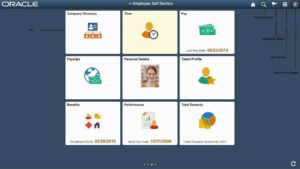Artificial Intelligence in business – the opportunities are there
Companies and administrations have a lot of raw data at their disposal and the basic question remains the same: How can we make this data more valuable?
Artificial Intelligence (AI) and Machine Learning (ML) are about making a computer perform complex tasks that were previously only performed by the human brain and its sensors (eye, ear, etc.). The related field of Robotics is excluded from the scope of this document.
Exploiting the potential of AI requires a major effort of imagination to match business needs with available solutions. However, very recent techniques, known as “deep learning”, make it possible to achieve near-human performance or even better. Let us mention the main ones :
– Computer vision, image classification, character and pattern recognition, quality enhancement, re-colourisation,
– Language processing, word prediction, sentiment analysis, text content recognition, authentication
– Speech analysis, sound processing, sound reinforcement
– Semantic search engines
– Data analysis: value prediction, behaviour prediction, classification, structure detection.
The first applications have appeared in companies :
– Sales : behavioural analysis, forecasting, relationship discovery and correlations,
– Marketing : product recommendations by affinity, personalised advertising
– Logistics / Transport / Industry / Construction : route prediction, warehouse routing, stock optimisation, predictive maintenance,
– Administration and finance: document analysis, data extraction, authentication, filing, etc.
– Banking : anti-money laundering, asset management, algorithmic trading
– Insurance : “behavioural” premiums, trust estimator, connected object insurance
– Telecom : customer turnover forecasting
An important metric to consider is the time saved in operational processes. Either by directly replacing actions or, for costly and time-consuming data collection steps, replacing exact values with estimated values based on transaction history, while respecting the quality of the processes. Reducing user waiting times is a key objective.
A second criterion is the quality of the decisions to have a second opinion, based on 100% of the available data, brings value on anticipation capacities (estimations of values and categories, etc.). The idea is to provide users with “decision assistants”. A range to remember: 90-95% is the minimum accuracy of forecasts obtained today by mobilising the appropriate techniques.
A third requirement is to improve the understanding of one’s business through an iterative AI approach: new services produce new data that enrich the initial models and thus allow for continuous process improvement and the creation of new original AI-based services. The successful implementation of AI relies on specific criteria :
Planning : the focus is sometimes too much on the « Big Data » collection/storage function without having a complete vision of the applications and their deployment in real life, beyond the POCs and other tests. Yet the precise selection of the application domains to be treated from end to end is a major criterion for success.
Involve : Involving all stakeholders, especially business stakeholders, in the selection of application areas by insisting on the real value of the solutions and the credibility of the planned deadlines.
Making the best use of the data. Data is at the heart of the project. It is from the data that the management rules will be established, which is the opposite of the traditional approach. Whatever their size, and often the « Big Data » aspect is not the major criterion, the quality and availability of the raw data and the additional information associated with this data (« labelling ») are major elements.
Think big, start small : starting with a particular function allows you to build knowledge and engage in an agile approach to continuous improvement with the flexibility provided by the Cloud
Reuse : take advantage of the existence of data sets and pre-trained algorithms (« Transfer Learning ») offered by the most advanced platforms.
Invest in resources capable of injecting an AI culture into organisations, between the business and Data Engineers and Data Scientists.
Identify the ethical, social and legal implications of the initiatives.
How can we ensure that we make the right decisions?
 The approach must be based on close cooperation between business actors responsible for operational results and technical actors. The consultants bring the external vision confronted with best practices and the ability to assist in “translating” the business needs into technical needs.
The approach must be based on close cooperation between business actors responsible for operational results and technical actors. The consultants bring the external vision confronted with best practices and the ability to assist in “translating” the business needs into technical needs.
This includes in particular :
– Presentation of key applications in the sector
– Identification of priority application areas
– Formalisation of candidate macro processes
– Mapping of available data, identification of learning methods,
– Potential and limitations of algorithmic techniques to be used,
– Economic estimates and Value Analysis,
– Construction of the AI Master Plan
– Operational support for the project
Serge BERNARD
Senior Manager—Performance Area




